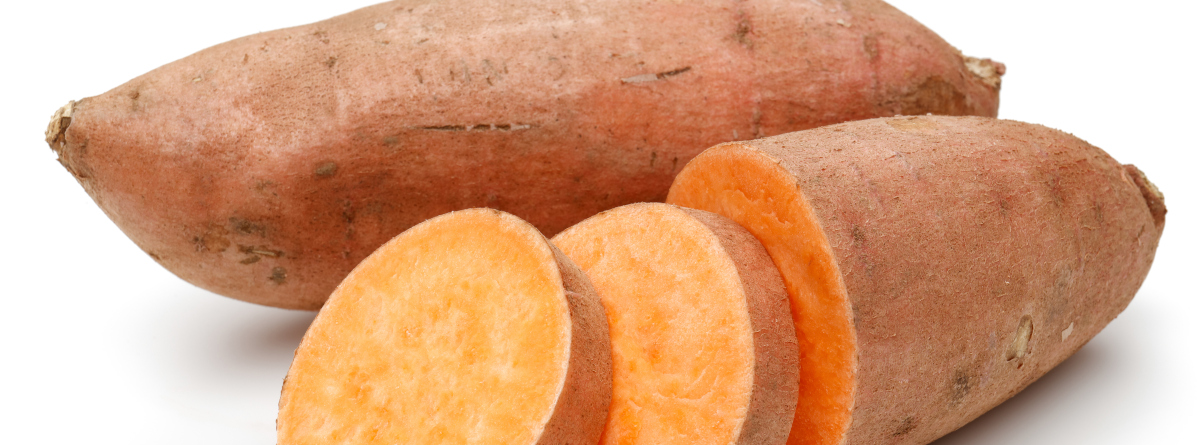
How to select
Choose sweet potatoes that are firm and do not have any cracks, bruises or soft spots.
How to prepare
- Rinse the sweet potatoes under running water and pat dry.
- Sweet potato skin can be left intact or peeled with a vegetable peeler depending on the recipe.
How to store
Store in a cool, dark and well-ventilated space – like a pantry – where they will keep fresh for up to 10 days.
Peak season
Fall
Ways to use
- Replace white potatoes in a recipe with sweet potatoes, such as potato salad or hash browns.
- Slice into thin strips and bake sweet potato fries or slice them to create sweet potato chips.
- Bake, roast, grill, mash, steam, juice, microwave or eat raw.
- Enjoy a baked sweet potato.
- Add to stir-fries, soups, and casseroles.
Fun facts
- George Washington, our first president, grew sweet potatoes on his farm in Mount Vernon, Virginia.
- Sweet potatoes are often confused with yams but they are not even in the same species!
- Sweet potatoes originated at least 5,000 years ago.
- North Carolina is the leading producer of sweet potatoes in the United States.
Nutrition info and facts
One medium sweet potato provides 120% of the daily recommended amount of vitamin A. Sweet potatoes are a good source of potassium to help regulate fluid balance. Leave the skin on, as it's full of nutrients, but be sure to give it a good scrub with a veggie brush before cooking.
1 5" sweet potato = 112 calories, 2 g protein, 26 g carbs, 4 g fiber, 39 mg calcium, 33 mg magnesium, 61 mg phosphorus, 438 mg potassium, 922 µg vitamin A, 11,100 µg beta carotene
Learn more
Growing potatoes in home gardens (UMN Extension)
Sources
FoodData Central. Sweet potato, raw, unprepared (Includes foods for USDA's Food Distribution Program). April 2018.